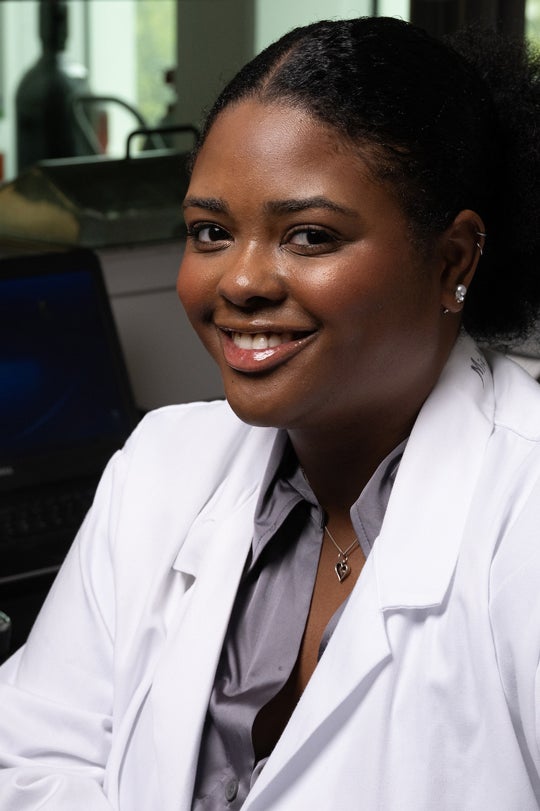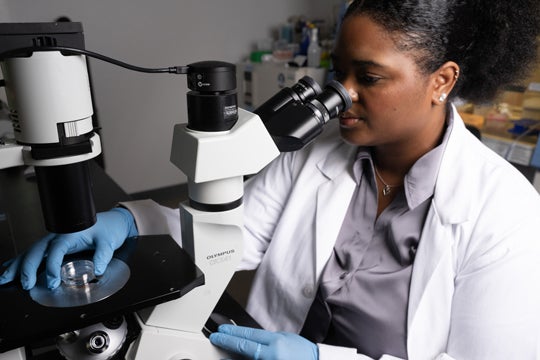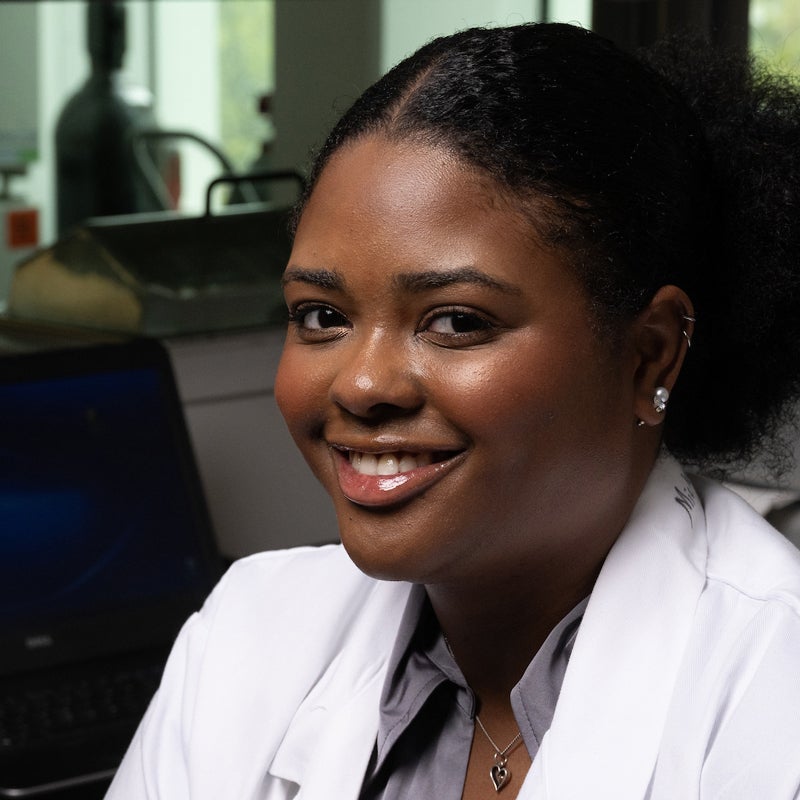
In the Neonatal Intensive Care Unit (NICU), Ariah Richards sees the most fragile newborns fighting to survive. In the lab, she sees the genetic blueprints that shape their development. After four years at Rice, she’s learned that medicine isn’t just about patient care or research — it’s about bringing them together.
Ariah traces her drive to pursue medicine back to her grandfather, who always told her to have the audacity to dream big. “My grandfather, a Black man in the South, couldn’t finish high school because he had to go to work, but he became a prominent figure in our community. His advice really stuck with me.” That mindset, along with the support of Rice’s Emerging Scholars Program (RESP), pushed Ariah to tackle challenges head-on.
The summer before her first year, RESP introduced her to biology lab techniques and set her on a research path — one that would soon intersect with her passion for medicine. The summer after her freshman year, Ariah joined Richard Behringer’s lab at the University of Texas MD Anderson Cancer Center. “I like to say we’re kind of a quirky lab in that space because we don’t study cancer,” she said. “The lab is actually focused on sex development and sex differentiation.” Her research examines Müllerian duct regression, a key process in male sex differentiation.
This video shows a male reproductive tract at embryonic day 13.5, with Müllerian and Wolffian ducts initially in green and proliferating cells in red. As the video progresses, you see the 3D segmentation of the Müllerian duct in pink and the Wolffian duct in blue. Finally, isolated Müllerian duct proliferating cells are shown in white and then red. (Video courtesy of Ariah Richards)
Early embryos develop both Müllerian and Wolffian ducts — the precursors to the female and male reproductive tracts. In females, the Wolffian duct passively degrades in the absence of testosterone, but in males, Müllerian duct regression requires a complex interplay of factors. While previous studies in Behringer’s lab focused on the biochemical signals involved, Ariah investigates the physical mechanisms. “Is it decreased cell proliferation in the Müllerian duct, an increase in apoptosis or even possibly cells migrating to different places?”

To study this, Ariah refined a protocol for ex vivo fetal organ culture. By keeping dissected mouse fetal reproductive tracts alive outside of the organism, she can track regression in real time using fluorescent tags and time-lapse imaging. “The tissue samples I take are a fraction of the size of a fingernail, so I’ve gotten really good at microdissections,” she said. Her findings suggest a combination of factors: some cells die, proliferation slows and cells shift position, creating breaks in the duct structure. “It’ll get really thin, then contract into these smaller little balls, and eventually they’re gone, and then you have a boy,” she said.
Ariah’s research has given her a deep appreciation for the biological complexity of development, but her experiences outside the lab have reinforced why she wants to pursue medicine. Volunteering in the NICU at Ben Taub Hospital has been especially meaningful. “It’s such an amazing experience. They’re literally newborns born too early or with different defects, but they still find a way to fight, and that makes me even more motivated to want to help them.”

Her passion for medicine extends beyond the hospital. Through a study-abroad program, she explored healthcare systems in Vietnam, South Africa and Argentina, gaining firsthand insight into global health disparities. “Poverty is a problem in health care, and classism really affects the quality of care that you get sometimes,” she said. She’s inspired by the creative ways healthcare professionals address these inequities, whether financial, racial or geographic.
Now, as she prepares to start medical school in the fall, Ariah envisions herself as a physician who will not only treat patients but also build trust in communities with deep-rooted skepticism of medicine. “What I love most and what I will probably always love the most is the people,” she said. “The doctor-patient relationship is something special because there’s a lot of trust in that relationship. And I think that starts with looking at your patients as people first.”

